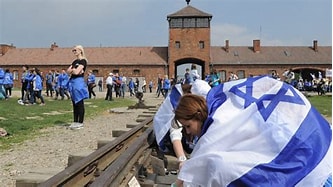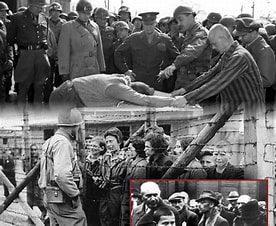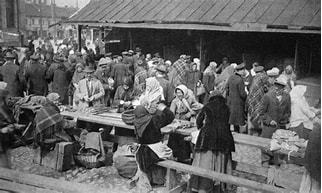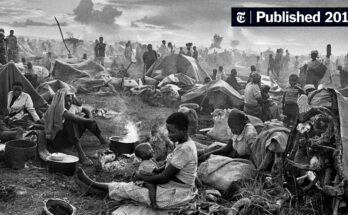The Holocaust
Introduction
The Holocaust stands as one of the darkest chapters in human history, a grim reminder of the consequences of hatred and intolerance. Between 1941 and 1945, Nazi Germany systematically murdered six million Jews, along with millions of others deemed “undesirable.” This horrific genocide was not an isolated event but rather a culmination of years of anti-Semitic policies and propaganda. In this article, we will explore the origins, execution, and aftermath of the Holocaust, examining its impact on the Jewish community and other targeted groups.

Understanding the Holocaust
What Was the Holocaust?
The Holocaust refers to the systematic, state-sponsored persecution and genocide of Jews by Nazi Germany and its collaborators. This atrocity was part of a broader campaign against various groups, including Roma (Gypsies), disabled individuals, Polish people, Soviet prisoners of war, and others.
Key Dates and Events
- 1933: Adolf Hitler becomes Chancellor of Germany, marking the beginning of anti-Jewish policies.
- 1935: The Nuremberg Laws are enacted, stripping Jews of their citizenship and rights.
- 1941: The “Final Solution” is formally implemented, leading to mass deportations and killings.
- 1945: The Holocaust ends with the defeat of Nazi Germany.
The Roots of Anti-Semitism
Historical Context
Anti-Semitism has deep historical roots in Europe, dating back centuries. Jews were often scapegoated for economic hardships and societal problems. This long-standing prejudice laid the groundwork for the extreme measures taken by the Nazis.
Nazi Ideology
The Nazis propagated a worldview based on racial purity, viewing Jews as racially inferior. Their ideology was fueled by pseudo-scientific theories that promoted Aryan supremacy. This dangerous belief system justified discrimination, segregation, and ultimately genocide.
The Mechanisms of Genocide
The Implementation of the Final Solution
The “Final Solution” was a euphemism for the plan to exterminate all Jews in Europe. This plan was formalized during the Wannsee Conference in January 1942, where high-ranking Nazi officials coordinated efforts to carry out mass murder.
Methods of Killing
The Nazis employed various methods to carry out their genocidal plans:
Mass Shootings
Mobile killing units known as Einsatzgruppen followed German troops into Eastern Europe. They rounded up Jews in mass shootings, often forcing them to dig their graves before being executed.

Concentration Camps
Concentration camps were established across Europe to detain Jews and other targeted groups. Conditions were brutal, with forced labor, starvation, and disease leading to countless deaths.
Extermination Camps
Extermination camps like Auschwitz-Birkenau were specifically designed for mass murder. Victims were transported via trains and gassed upon arrival. It is estimated that around 1.5 million Jews were killed at Auschwitz alone.
Life in Ghettos
Segregation and Dehumanization
Before mass deportations began, many Jews were forced into overcrowded ghettos. These enclosed areas were intended to isolate Jewish populations from non-Jewish communities.
Living Conditions
Life in ghettos was marked by extreme deprivation. Families lived in cramped quarters with limited access to food, sanitation, or medical care. Disease spread rapidly due to unsanitary conditions.
Resistance and Resilience
Acts of Defiance
Despite overwhelming odds, many Jews resisted their oppression through various means:
- Uprisings: Notable uprisings occurred in ghettos like Warsaw in 1943.
- Partisan Groups: Some joined resistance movements or partisan groups fighting against Nazi forces.
Cultural Preservation
Even amidst despair, Jewish communities sought to preserve their culture through clandestine education and religious practices. This resilience is a testament to their enduring spirit.

Liberation and Aftermath
The End of World War II
As Allied forces advanced into German-occupied territories in 1944-1945, they began liberating concentration camps. The horrors uncovered shocked the world.
Post-War Impact on Survivors
Survivors faced immense challenges after liberation:
- Displacement: Many had lost their families and homes; they struggled to rebuild their lives.
- Psychological Trauma: Survivors dealt with profound trauma from their experiences during the Holocaust.
The Legacy of the Holocaust
Education and Remembrance
In response to this atrocity, numerous educational programs have been established worldwide to ensure that future generations understand the importance of tolerance and acceptance.
Memorials and Museums
Institutions like Yad Vashem in Israel and the United States Holocaust Memorial Museum serve as memorials to those who perished while educating visitors about this dark period in history.
Legal Repercussions
The Nuremberg Trials held after World War II sought justice for war crimes committed during the Holocaust. These trials established precedents for prosecuting crimes against humanity.
Lessons Learned from the Holocaust
Importance of Human Rights
The Holocaust underscored the need for robust protections for human rights globally. It serves as a reminder that complacency can lead to catastrophic consequences when hatred goes unchecked.
Combating Anti-Semitism Today
Despite progress made since World War II, anti-Semitism remains a persistent issue worldwide. Ongoing education and advocacy are crucial in combating hate speech and discrimination against Jewish communities.
Conclusion: Remembering History
The Holocaust stands as a chilling reminder of humanity’s capacity for cruelty but also highlights resilience in the face of unimaginable adversity. By remembering this tragic chapter in history, we honor those who suffered while committing ourselves to prevent such atrocities from occurring again.
As we reflect on these events today, let us strive toward a future grounded in empathy, understanding, and respect for all individuals—regardless of their background or beliefs.
FAQs
1. What was the primary goal of the Holocaust?
The primary goal was to systematically exterminate all Jews in Europe along with other groups deemed undesirable by Nazi ideology.
2. How many people died during the Holocaust?
Approximately six million Jews were murdered during the Holocaust, along with millions of others including Roma people, disabled individuals, Poles, Soviet prisoners of war, and more.
3. What methods did Nazis use for mass killings?
Nazis used various methods including mass shootings by Einsatzgruppen units, gas chambers in extermination camps like Auschwitz-Birkenau, forced labor leading to death from starvation or exhaustion.
4. How did survivors cope after liberation?
Survivors faced immense challenges such as displacement from homes; many dealt with psychological trauma while trying to rebuild their lives amidst loss.


